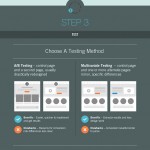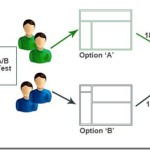“Get special 50% discounts on laptops!” “Sign up now and get an exclusive free gift pack from us!”
You see those ads everywhere on many of your favorite websites. For some people, the knee-jerk reaction is to label them as spam. But those ads are a crucial part of a company’s online marketing strategy, because they can lead to new customers and leads. Many sites, especially e-commerce sites, use those ads to lead to a page where customers can be enticed to buy or subscribe to something. This is called the landing page.
A landing page is where customers can choose to willingly give their contact information via a lead capture/conversion form. In some cases, even having a 0845 numbers give you a professional image and customers don’t need to provide their information, until they know more.
A landing page uses a specific marketing promotion in order to obtain leads by giving further details on some kind of interesting offer which was only hinted at in the ad. It is a great tool in generating new leads and converting old leads into sales as it helps a company determine what clicks with customers. However, creating a landing page can be a very tricky business. Many companies and affiliate marketers end up doing it wrong, and their efforts result in low conversion rates and disappointed users.
5 reasons why a landing page ends up being ineffective
- Lack of clarity. Probably the most important part of a landing page is the information it provides a customer concerning the offer. Thus, you don’t want to clutter the page with information that is irrelevant. You want to tell potential customers what the offer is, exactly, and what makes it so special that they ought to avail of it ASAP. It should tell customers why this offer will provide them with something they would really care to have, so your aim is to be compelling. Even the language that you use affects how relevant your information will be to a potential customer, so avoid using generic terms like “subscribe”, “read here”, etc. Remember, your goal is to market this promotion so you want to use words that are convincing and geared towards selling your offer, like “exclusive”, “special discount”, etc. Emphasize the benefits your customers are getting if they become your leads.
- Too many links. In online marketing, links are often a good thing. But not here. A landing page has one specific function—to get your customers to take a specific action. You don’t want to distract them from that by giving them the opportunity to navigate and explore through your site. So a landing page shouldn’t be your home page—it should be a separate page altogether that hides links and allows them to focus on the offer, and what you want them to do on the page to avail of it.
- Too much clutter. Links aren’t the only thing that can be distracting on your landing page. Even content, however relevant, can be a detriment to your page. On a landing page, you want to be concise and straightforward; therefore an ideal landing page would only have the following elements: a headline, a description of the offer, fields for the customer’s contact details, testimonials (whenever possible), and a call to action link or button. A landing page should have lots of white space—too many designs or images can end up being a disadvantage. Minimalism is the best way to go.
 No design cohesion. The way your landing page is constructed affects how customers see your marketing strategy. The theme of your landing page should gel with the design of the ad you used to promote it in terms of color scheme and the graphics used. The idea is to keep the momentum you gained from the ad—it’s a reminder to your customers of how they got to your landing page in the first place. The only part of your landing page that should be different is your call to action link/button. That should be large, positioned well on your page (preferably in the middle and surrounded by white space), and pops color-wise to make your customers take notice immediately.
No design cohesion. The way your landing page is constructed affects how customers see your marketing strategy. The theme of your landing page should gel with the design of the ad you used to promote it in terms of color scheme and the graphics used. The idea is to keep the momentum you gained from the ad—it’s a reminder to your customers of how they got to your landing page in the first place. The only part of your landing page that should be different is your call to action link/button. That should be large, positioned well on your page (preferably in the middle and surrounded by white space), and pops color-wise to make your customers take notice immediately.
- Lack of follow-ups. Ok, so you finally got a customer to sign up for a newsletter or make a purchase. That’s not the end of your landing page’s job. Your landing page should link to a thank-you page confirming the receipt of your new lead’s information, and how they will be able to get what you promised in the offer. Don’t keep your lead hanging by not giving them any assurances that their effort to visit you was not in vain. And also, give them the chance to share the page to their friends via links to Facebook, Twitter, LinkedIn, or other social media so that your conversions don’t end, but can keep going via their referrals. And don’t lose your old leads—keep them coming back by providing valuable newsletters or new offers.
The great thing is, there are various tools on the Internet now to help you create your landing page. HubSpot, for example, has its Landing Pages tool that can simplify the process of landing page creation for you. And you can spread the word of your landing page via e-mail marketing and social media. A landing page can be a very beneficial piece of additional content to your site, as long as it’s used right.









Comments are closed.